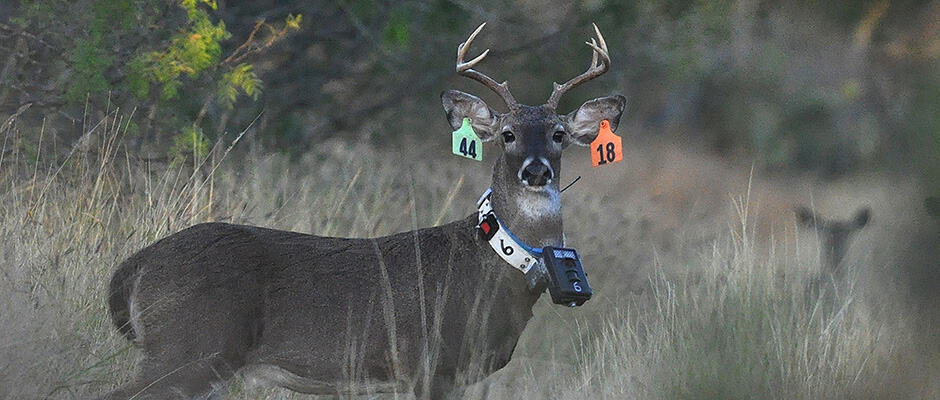Share this article
Novel Collars Aid in Assessing Disease Risks
The ability to accurately measure and detect contact between two or more animals is critical to understanding disease transmission risks. In order to collect more accurate contact data among white-tailed deer, researchers at the USDA Wildlife Services’ National Wildlife Research Center (NWRC) built a deer-borne contact detection system (DCDS) consisting of cameras and proximity loggers installed on global position system (GPS) collars. To ensure the DCDS did not alter the behavior of the deer, researchers conducted a preliminary evaluation of potential stress on deer as a result of the device and monitored the deer for five hours immediately following the placement of collars.
Twenty-six adult male deer were fitted with DCDS collars to record their locations, proximity to other equipped deer, and video of deer interactions in southern Texas. From 17 of the 26 collars, researchers documented 16 contacts with GPS, 33 with cameras, and 61 with proximity loggers, resulting in estimated mean daily contact rates of 0.12, 0.29, and 0.66, respectively. Cameras and GPS underrepresented contacts among deer, whereas proximity loggers provided credible estimates for disease modeling.
“The results underscore the importance of accurate detection and contact rates when modeling disease transmission risks,” notes NWRC supervisory research wildlife biologist Dr. Kurt VerCauteren.
Wildlife Services is a Strategic Partner of The Wildlife Society.
Header Image:
A white-tailed deer sports several devices used to capture contact rates among individuals.
Image Credit: Michael Lavelle, USDA Wildlife Services








